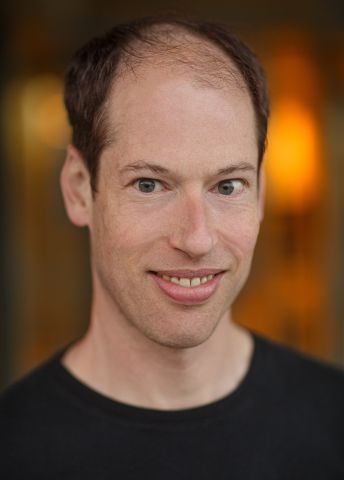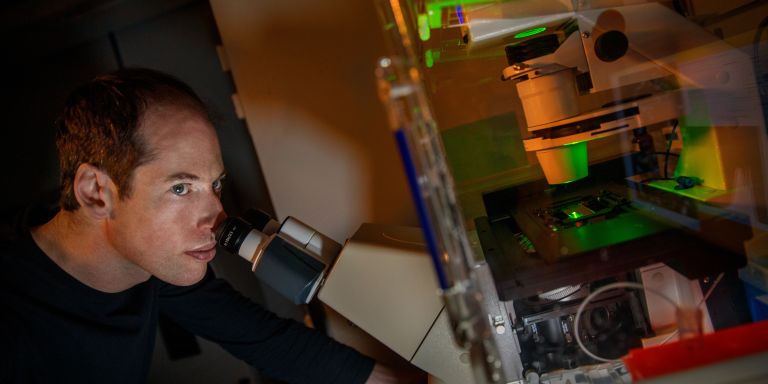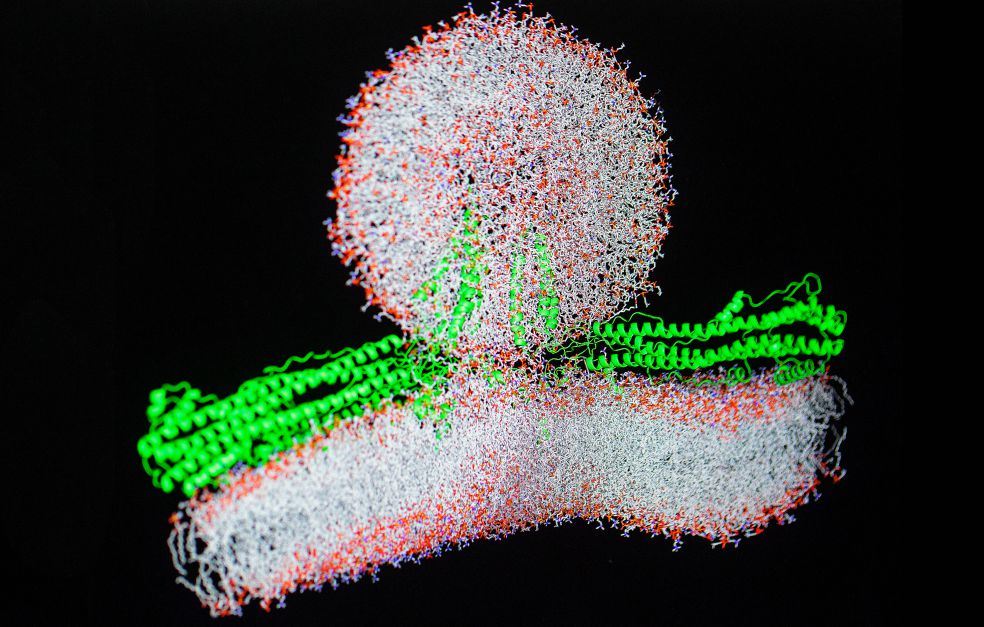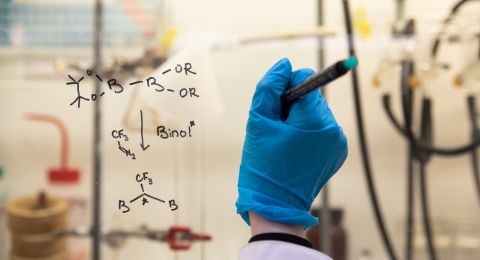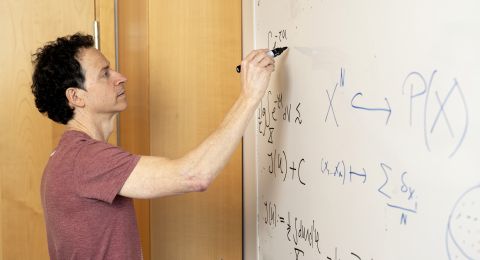What happens at atomic level when an influenza virus infects a cell? Peter Kasson has created a model of the complex phenomenon by combining advanced computer simulation, microscopy and nanotechnology. But pieces of the puzzle are missing. One major challenge is to understand molecular movements when the respective membranes of the virus and the cell fuse together.
Peter Kasson
Doctor and Associate Professor of Molecular Biophysics
Wallenberg Academy Fellow, prolongation grant 2020
Institution:
Uppsala University
Research field:
Combining molecular experiments with advanced computer modeling to increase our knowledge of how viruses such as influenza and SARS-CoV-2 infect cells
“If we are to develop new vaccines and antiviral therapies, it’s important to gain detailed knowledge of the process by which a virus infects a cell,” says Peter Kasson.
He comes from the U.S., and his research team operates in Sweden at Uppsala University and SciLifeLab in Uppsala as well as at the University of Virginia. His research is primarily concerned with influenza viruses, and the processes that take place when a virus enters a cell, the host cell, which then begins to produce and spread more of the virus. It is a huge challenge to study the fusion of the lipid shell of the virus with the cell’s protective membrane.
“These events occur incredibly quickly. They take a few microseconds, and the molecular details of the process are miniscule.”
When Kasson was chosen as a Wallenberg Academy Fellow in 2015, his aim was to see whether a combination of advanced computer models and microscopy could reveal how influenza virus infects cells. One method he and his team used was fluorescence microscopy, which enables scientists to gain a nanoscale view in real time of what happens with individual viruses.
“We’ve made substantial progress in our combined use of these two tools. With the help of simulation methods and machine learning, we’ve been able to predict a mechanism in the initial stages of the influenza virus entry of the cells that explains many of our experimental findings.”
The team has also used nanotechnology to create a sort of artificial mimic of the cell membrane that they can control and study in various ways.
“By combining our methods, we have created a much better model of how influenza virus enters cells, and how the virus interacts with cell membranes.”
Vaccine research during the pandemic
During the corona pandemic Kasson began to pursue another line of research as his team became involved in various collaborations focusing on the culprit: the SARS-CoV-2 virus.
“In late January 2020 I realized there was a real risk of a pandemic, and I looked into whether we could contribute with our research. My research teams, both in the U.S. and in Sweden, were amongst others involved in work on different vaccine technologies.”
A big surprise, according to Kasson, is that the first generation of vaccines for SARS-CoV-2 have worked as well as they have. But second and third generation vaccines will likely be needed. He elaborates:
“We’re not experts at developing vaccines, but since we’re studying the entry mechanisms of new viruses, we have some specific methods for evaluating how well a vaccine works. The ultimate test is naturally a clinical study, but we can evaluate efficacy at a molecular level in a way that provides feedback in designing vaccines. We have in various collaborations been able to build technologies that may be of help in developing second and third vaccine platforms. We want to refine these technologies and try to use them in vaccine development.”
“It offers a flexibility in the research, and support in our efforts to solve the most challenging and fascinating mysteries of how viruses enter the cell.”
Dynamics and unique drivers
New lessons have been learned from the corona pandemic, and new collaborations have formed. But Kasson stresses that this has not altered the main emphasis of his team’s work. According to WHO figures, some 250,000–500,000 people die of influenza every year:
“Flu viruses continue to pose a significant pandemic threat. So both flu viruses and corona viruses need to be considered strongly in future pandemic preparedness.”
As the project continues under the Wallenberg Academy Fellow scheme, Kasson is taking on a major technological and intellectual challenge.
“Viral membrane proteins move in a way that prepares entry to the cell. If we don´t understand this process it will be hard to solve the problem how viruses enter the cell. But so far it’s been difficult to use computer models to understand molecular movements and their dynamics, and how molecular structure changes over time.”
To solve this problem the research team needs to develop new theories and combine advanced computer models with chemistry.
“We need to understand the gears in machine learning and the molecular biochemistry and combine the two. To do so, it’s vital that we can both make computer models and perform chemical experiments within the team.”
Kasson also wants to examine the factors unique to the influenza virus as it enters the cell, and whether there are similarities with other viruses.
“This knowledge about different viruses – the similarities and differences in their modus operandi – can be used to develop new antiviral drugs. Because what is really fascinating about viruses is that they are evolutionarily very diversified. So if some families of virus do something in the same way, that must represent, or at least reflect, a common evolutionary driver from which we can learn.”
Text Susanne Rosén
Translation Maxwell Arding
Photo Magnus Bergström
